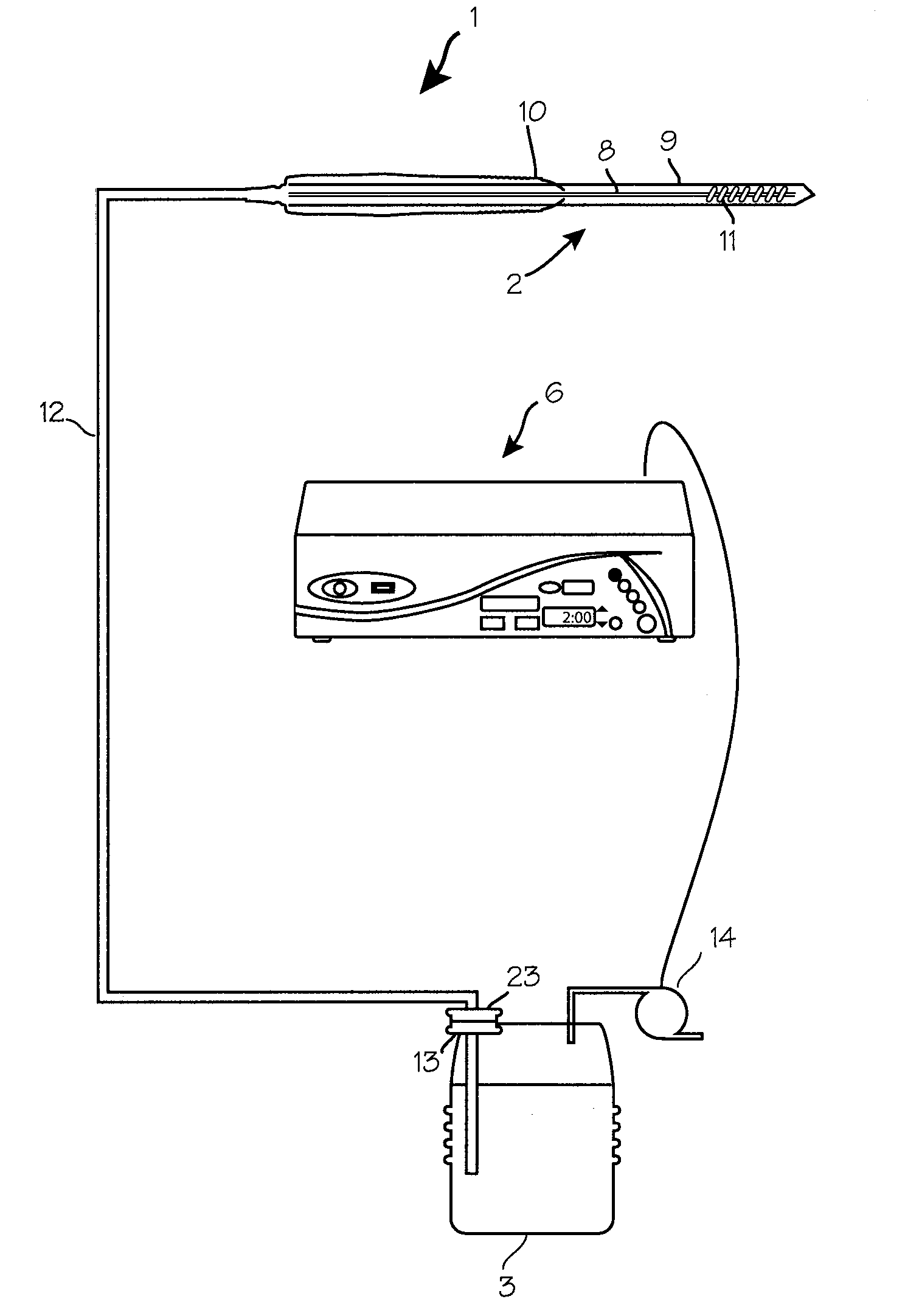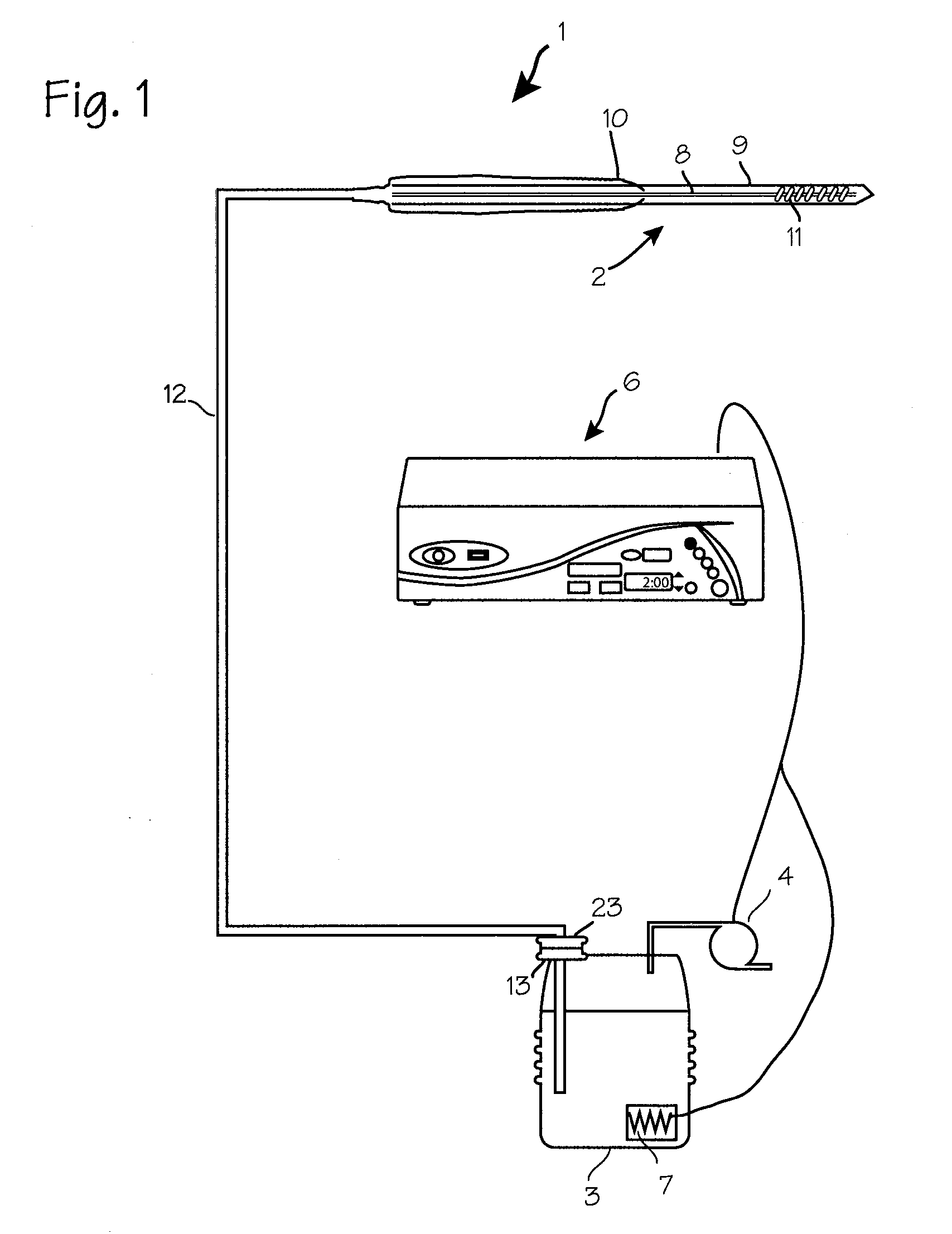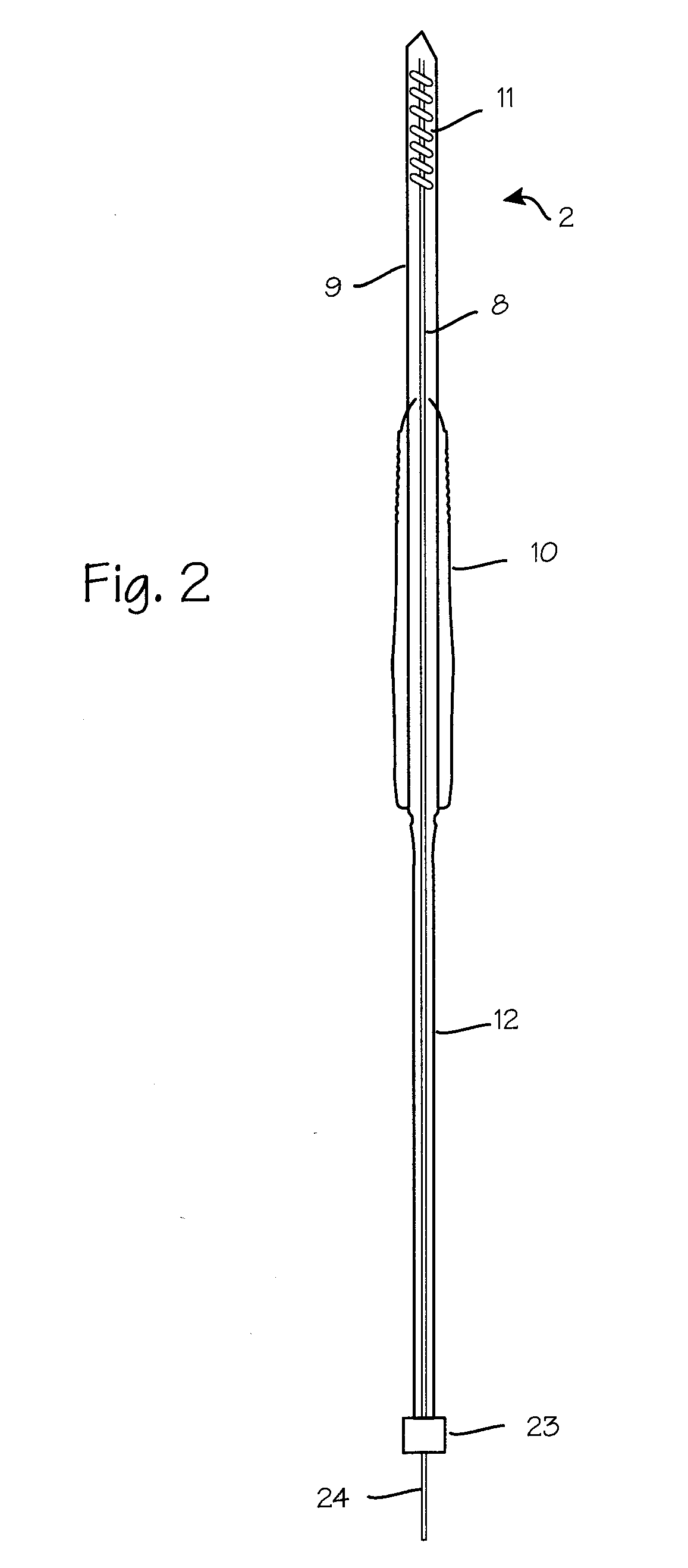Cryosurgical System
a cryosurgical and system technology, applied in the field of cryosurgical systems, can solve the problems of excessive use of cryogen, inefficient heat transfer, cryoprobes utilizing joule-thomson systems, etc., and achieve the effects of less nitrogen, less radiation, and sufficient cooling power
- Summary
- Abstract
- Description
- Claims
- Application Information
AI Technical Summary
Benefits of technology
Problems solved by technology
Method used
Image
Examples
Embodiment Construction
[0023]FIG. 1 illustrates a cryosurgical system which uses liquid nitrogen as a cryogen. The cryosurgical system 1 comprises cryoprobe 2, a cryogen source 3, pressurization pump 4, and a control system 6 for controlling the control valve. The system may also be provided with a cryogen source heater 7 placed in thermal communication with the cryogen source. The desired flow of cryogen from the dewar to the cryoprobe is induced in this embodiment by pressurizing the cryogen source with air delivered by the pressurized pump. The cryosurgical system 1 may be adapted to accommodate multiple cryoprobes with the addition of appropriate manifolds, and the control system may be computer-based or otherwise operable to automatically control the pressure and flow rate and other system components to effect the cooling profiles for desired cryosurgeries.
[0024]The cryogenic system 1 is arranged without a control valve in fluid communication with the fluid pathway. The necessary cryogen flow rate of...
PUM
 Login to View More
Login to View More Abstract
Description
Claims
Application Information
 Login to View More
Login to View More - R&D
- Intellectual Property
- Life Sciences
- Materials
- Tech Scout
- Unparalleled Data Quality
- Higher Quality Content
- 60% Fewer Hallucinations
Browse by: Latest US Patents, China's latest patents, Technical Efficacy Thesaurus, Application Domain, Technology Topic, Popular Technical Reports.
© 2025 PatSnap. All rights reserved.Legal|Privacy policy|Modern Slavery Act Transparency Statement|Sitemap|About US| Contact US: help@patsnap.com



